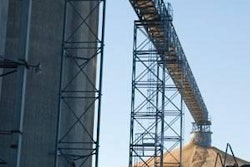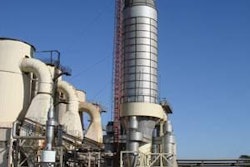
The animal feed industry is affected by a growing number of issues and events, each with a varying role to play in shaping its future. In this issue, Feed Management invited four leaders from among the top feed manufacturers in North America to provide their perspectives on the state of the industry, today and tomorrow. We asked them to talk about not only what has led them to survival and growth in an often rapidly changing environment, but what keeps them awake at night and what gets them excited about the future of their business.
Todd Hall is president, Cargill Animal Nutrition, Minneapolis, Minn. A business unit of Cargill, Inc., Cargill Animal Nutrition's global business encompasses more than 9,000 employees working in 167 plants in 25 countries, serving customers in the beef, dairy, pork, poultry, aquaculture, equine, retail farm store, and pet-food categories.
Donald Orr, Jr., is president, JBS United, Inc., Sheridan, Ind. Since its founding in 1956, much of JBS United's research has focused on swine. In recent years, JBS United has expanded into more poultry and equine research applications. Its product offerings include research-based animal nutrition products and services, grain merchandising, environmental consulting services, grain origination and livestock production.
Fernando Palacios is president, Land O'Lakes Purina Feed, Shoreview, Minn. Land O'Lakes Purina Feed is the largest U.S. producer of animal feeds. The company addresses the dietary needs of livestock, specialty animals, zoo and lab animals, wild birds, and companion animals, backed by one of the leading research facilities in the United States and experienced feed consultants.
Steve VanRoekel is president and CEO, Ridley, Inc. Ridley Inc., headquartered in Mankato, Minnesota, and Winnipeg, Manitoba, is one of North America's leading commercial animal nutrition companies. Ridley Inc. manufactures and markets animal nutrition and health products and services to meat, milk and egg producers, and companion animal and equine owners throughout North America.
FM: What are the biggest challenges facing the North American feed industry today?
Hall: Maintaining customer confidence in the safety and overall integrity of our food and feed chain is the single greatest challenge facing our industry today. Concern has grown in recent years over the potential impact of avian influenza and BSE, as well as more recent threats such as bioterrorism, generating additional media attention and debate about the safety of our food and feed supply. Most recently, a series of food-borne illnesses attributed to a fresh produce E coli outbreak poignantly demonstrates the vulnerability of our supply chain and the potential to quickly impact customer perceptions both domestically and internationally.
The costs of not having a good traceability system in place are borne by all of us in the supply chain, creating problems for producers, processors, and the end-use customer, as well as for other product suppliers who lose sales because the system can't quickly pinpoint the source of a contaminated product.
Another major challenge is that a number of major retailers and foodservice operators are creating their own, unique production specifications, not only relating to quality but also to environmental, social and economic impacts. This represents a major paradigm shift for the feed industry. There will be growing pressure to reduce our environmental footprint. We are committed to doing whatever we can to anticipate and address issues around food and feed safety, and this commitment is reflected in the way we work today with producers.
Orr: Diversion of animal feed ingredients toward bio-energy and the resulting higher feed costs. Coupled with this will be the increased use of alternative ingredients, particularly co-products (DDGS) from the ethanol industry. The feed industry is also facing limited supplies of certain critical ingredients, such as milk byproducts, commonly used in young animal diets. It is becoming imperative that a company have up-to-date animal research data to maximize nutritional application of these alternative ingredient sources.
Enzyme applications can take on greater importance to improve nutrient availability from specific alternative ingredients. The feed industry will be looking for consistent, cost effective results when using enzymes. The feed industry must utilize feed phytase enzymes to assist swine and poultry producers in managing nutrient (phosphorus) content of animal manure if we are going to provide solutions for environmental issues.
Siting issues of livestock production facilities is becoming a bigger problem, particularly in areas with increasing human population. Opportunities for livestock facility expansion, as affected by state permitting processes and local zoning oversight, are limited in certain geographic areas.
Palacios: The ethanol boom, the commercial livestock consolidation, ruralpolitan' growth, people availability and biosecurity.
In terms of the ethanol boom, the feed industry will have to manage increases in commodity costs and the integration of new ingredients, such as DDGS, into formulations. At the same time, the feed industry will have to react to livestock moving closer to sources of available corn and DDGS and compete in the food vs. fuel market.
The commercial livestock consolidation will continue to pressure capacity utilization and force feed manufacturers to refocus their efforts toward value-added products and services which will address health, production efficiencies and convenience concerns. The ruralpolitan' growth will influence land cost, moving some commercial operations away, and will increase the need for a package goods infrastructure to address the lifestyle feed segment: horses and companion animals.
Agribusiness in general will face difficulty in filling skilled positions with agriculture experience. Remote locations will face shortages of qualified employees and will be forced to compete with higher salary guides and better lifestyle environments of competing industries.
Increase in biosecurity expectations will result in additional regulations, potential process redesigns and improved traceability and lot control.
VanRoekel: The primary drivers in the commercial feed industry for the past twenty years have been meat, milk, and egg production consolidation and integration. Since 2000, we've added a third ation': operating cost inflation.
Inflation in areas like insurance, health care, energy, and legal and regulatory costs has been particularly challenging. Those companies who have been able to adapt, by continuing to find ways to drive efficiencies, have continued to be successful.
There are certainly other longer term issues that are of increasing concern. One in particular is the shrinking talent pool in meat, milk, and egg production. Both the commercial feed industry and integrators have been dependant on management and technical talent made available by the consolidation process in the industry over the last 10 to 20 years, and I'm concerned about a shortage of young people starting out. When you dam the river at the source, the water continues to run out the other end for a while, but sooner or later it's going to run dry.
FM: What issue or issues do you believe will have the greatest impact, positive or negative, on the future of the North American feed industry?
Hall: The biofuels boom is already placing extraordinary demands on and changes in the North American feed industry, and beyond. We believe that the rising costs of inputs and raw materials will have an even larger impact on the feed industry than the abundance (or arguably, overabundance) of distillers dried grains in the marketplace. Biofuels may have a very big impact on the availability of corn in the short-term and soybeans in the long-term. The ability of the U.S. grain industry to meet both domestic and export demands also may be stretched, which could impact feed customers in other countries.
At Cargill, we are focused on understanding the nutrient variances that exist in all ingredients, including DDGS, through extensive lab analysis and employment of other tools, such as our proprietary "optimum value supplier" database. These systems link to our formulation technology, which helps us manage variation in nutrients. And today we work directly with producers to suggest a more cost-effective source of the same nutrients. So from our standpoint, while the boom in biofuels is bringing change to our industry, this development makes our technology even more valuable to our customers.
Orr: Government subsidies directed to the ethanol and bio-diesel fuel industries will drive feed prices and opportunities for growth of both the feed industry and animal production industry. Even animal packing plants are able to receive government subsidies to encourage them to burn animal fat at the plant as an energy source. This, in turn, limits supply and raises costs of animal-sourced feed fats. The availability of feed energy sources may be limited and expensive as the feed industry competes with ethanol/bio-diesel industries for feed stock. The feed industry may be forced into feeding low-energy, high-protein feedstuffs.
Limited supplies of feed grains due to overall demand for grain from the ethanol industry or a possible drought in grain-producing areas will drive feed ingredient prices. Our company feels that this could also accelerate the consolidation of production within the livestock industry, resulting in fewer decision-makers as feed customers.
Available labor pools and future immigration policies can affect opportunities for animal feed growth. The Canadian livestock industry has faced these issues and now operates programs to encourage foreign labor to come to Canada and work on livestock farms.
Palacios: Ethanol and bio-diesel fuels, biosecurity and industry consolidation will have the greatest impact on our industry.
VanRoekel: It would be naïve not to mention how the dramatic surge in renewable fuel production will change, or already has changed, the face of agriculture in North America. There's plenty of disagreement about what will be the ultimate result, but there's no disagreement that there will be a paradigm shift. Of course, the biggest issue for the commercial feed industry is whether or not meat, milk, and egg production and ethanol can coexist and remain competitive on the world market. In the end, there's an old adage that says you should never bet against the American farmer.
From a broader perspective, the price rise and volatility in nearly all commodities, not just cereal grains and proteins, but raw materials like copper and milk products, are posing unique new challenges.
If not for the war in Iraq, there would be more attention being paid to health issues like the risk of avian influenza, and to food safety concerns. While the facts and the science continue to demonstrate that we have the safest food system in the world and that consumers have great confidence in that system, I suspect we will see renewed attention and lots of new regulations in food safety in the years ahead. The focus will be on greater transparency, and a better alignment with world standards like HACCP.
The recent situation at Swift is further proof we need to address immigration in this country, and soon. Labor is going to be one of the most significant issues agriculture will face in the years ahead.
And finally, we have a failed WTO negotiations and a U.S. Farm Bill that will be expiring soon. So how those two issues are ultimately resolved will have a long-term impact as well.
FM: What do you consider to be opportunities for growth in the next decade? In what areas do you expect to see some decline?
Hall: We are seeing rising standards of living in developing countries around the world. With this trend comes greater demand for animal proteins, generating in turn an increased demand for our products and solutions. This global trend presents a tremendous opportunity for the animal feed industry. We intend to be a leading contributor in meeting those growing needs, and indeed that is what our whole business is centered around.
I should add that in countries where animal protein consumption already is high, there may well be opportunities to leverage our nutrient management expertise to influence quality, as consumer quality expectations constantly rise and change.
As a business, we are moving from traditional, transactional feed product offerings to more fee-for-service, value-based consultative services that enable producers to better forecast the factors impacting their overall operations. For example, we are tapping our expertise in NIR (Near Infra-red Reflectance) ingredient analysis extensively in our work with producers. Our consulting services team has increased its focus on delivery of this technology and is dedicating greater resources to provide better connectivity and easier delivery of NIR services to producers. We already have clients in Asia, the Americas, Europe and Africa successfully utilizing NIR in their operations today through NIR calibration license agreements.
Orr: Novel research-driven products are a huge opportunity for the industry to bring value to its nutrition customers. Animal producers today demand this level of detail and creativity, in order to make decisions that will impact their bottom line. We need to be prepared to supply customers with factual data to support products and recommendations. We see a lot more partnering opportunities with key suppliers and customers. Trust established from these solid relationships allows each party to make informed decisions quicker. These changes will definitely sort out those companies that are committed to leading in the feed industry. Companies that learn to feed corn co-products from the ethanol industry will be successful with their feed customers of the future.
Ownership of livestock will change somewhat due to high-priced grains, resulting in more livestock production specialization. Some nutrition suppliers may find their customers being processors or the end marketer. This will bring about more emphasis on traceability and Safe Feed/Safe Food facility certification programs. Service factors will become critical as suppliers are asked to do more trucking, management of animals and animal sourcing.
Palacios: Opportunities for growth in the North American market will most likely be in the horse and companion animal areas and in proprietary products and services. As more urbanization occurs, the outer ring suburbs will grow, providing the traditionally non-rural population the opportunity to have a horse, rabbits, or other small animals, increasing the need for technical skills and feed expertise that a feed company can bring.
In the meantime, the livestock sector will continue to look for ways to improve their bottom line by searching for products and services that will improve animal health, improve feeding rates and reduce labor cost.
Areas of decline will be driven mainly by continual livestock consolidation and geographic expansion in areas where a particular company does not have a manufacturing presence.
VanRoekel: One of the great benefits of being involved in the commercial feed industry is that we know with certainty that despite its maturity and all of its challenges, there will be a continued, growing demand for proteins, and thus animal feed, worldwide. And of course, North America will continue to be the largest single market in the world for some time. So if you start with that premise, then there's plenty of opportun-ity. The challenge is in finding it in new places.
For us, that means starting with maintaining a successful business to meat, milk, and egg producing segments. While continued backwards integration and consolidation will slowly shrink the size of the total pie' available in these segments, we believe that by focusing on places where we can truly add value, we'll continue to grow organically.
We also believe that there will be opportunity for consolidation within the North American feed industry. We'll celebrate just our thirteenth year in the North American feed industry in 2007. We've grown to this spot in that period of time largely by understanding where and how to realize the benefits of consolidation.
Then finally, there continue to be opportunities for growth in many specialty segments. Not only for things like blocks, baby animal feeds, premixes, or feed additives for meat, milk, and egg production, where we have market leadership positions, but in rapid growth segments like companion animal and equine feeds as well. It's one thing to target these segments when you can't be competitive in meat, milk, and egg production, but quite another when you can leverage attributes like purchasing power and manufacturing capabilities from a strong traditional business into these segments.
FM: Overall, what are some ways that your company is positioning itself for success in the future?
Hall: As I have mentioned, Cargill is leveraging the use of new technologies to more easily and efficiently analyze feed ingredients to measure nutrient levels or identify with precision the presence of toxins in an ingredient. Most notably, we are investing heavily in research to develop more efficient, comprehensive feed management system offerings. To illustrate, we won a TEKNE technology award for developing new ways to manage the heat produced by a hog's digestion and balance the carbohydrate portion of the animals' diet, resulting in healthier hogs and higher producer profitability.
The globalization of our business and the knowledge it provides are enabling Cargill to better share our insights with customers. An example of innovation being shared between one Cargill business and another involves our emissions reduction business unit, which is collaborating with Cargill Animal Nutrition and dairy producers to tap a renewable energy source in the form of manure. That is, we are working to efficiently capture methane gas emissions, taking waste from livestock producers' farms and thereby generating a new source of income for the producer.
Orr: JBS United is focused on nutrition technology innovation and has committed extensive resources for state-of-the-art animal research capability. We have worked diligently at building an outstanding R&D Team in recent years. Their main job is to develop products and solutions to issues that swine and poultry producers are facing.
We have invested significantly in computerized feeding technology at our swine research facilities to evaluate more feeding treatments with adequate replicate observations. Recently we added poultry research capability in-house to support our expanding research needs, along with partnering with numerous major research universities for conducting basic swine, poultry and equine nutrition studies. JBS United combines its pig production knowledge with some of the top research capabilities in the world.
We have partnered with other leading companies in alliances and joint ventures to take new ideas from concept to commercialization. Today we are involved with joint alliances in the development and marketing of an advanced bacterial-origin phytase (OptiPhos®), plus protected long chain omega-3 fatty acid products for sows, boars and horses. Additionally, we are jointly developing microbial probiotic-based products for swine and poultry, as well as providing decision-making tools such as our Swine Record system and StrataPlan model for our swine nutrition customers.
We are presently establishing a global marketing program for our patented OptiPhos® phytase enzyme, as well as other platform nutrition technologies. JBS United has been marketing swine premixes in the Philippines since 1993 and has livestock premix manufacturing capability associated with our Chinese joint venture company, United-Liuhe Co. Ltd. In 2006, JBS United added a poultry marketing team, including a nutrition marketing specialist in South America.
Palacios: Land O'Lakes Purina Feed is continuing to focus on the value we bring to our customers and to invest behind our well-recognized and trusted brands. Our supply chain capabilities provide our customers with a national footprint that is founded on quality and service. As the innovator in products like milk replacers and feeding limiters for ruminants, we believe that there is a place in the changing commercial market for technology that improves performance for the animal as well as convenience for the producer. We have made a sizeable investment in our research facility at Longview, Gray Summit, Missouri to bring new ideas to the dairy, cattle, horse, swine and companion animals industry. In addition, we are actively assisting our dealers and cooperatives to meet the increasing needs of the suburban customer through new products and new and improved retail locations.
VanRoekel: We've put ourselves in a good position over the last five years in several ways. Our volume is well balanced across each of the meat, milk, and egg production, and companion animal and equine segments; and geographically across the major livestock markets in Canada and the U.S. Our earnings are nearly equally distributed between our specialty and traditional businesses. When the operating environment is challenging in one segment or geography it's usually strong in several others.
How we're organized is also important to success. We believe in a decentralized operations structure, which allows our businesses to operate independently. It allows them to respond more quickly to customers and innovate to meet the customer's needs. Then we aggressively centralize administration. This allows us to take advantage of our size to keep our administration and raw material costs as low as possible. We think our competitive advantage lies in combining the resources of a large company with the flexibility of a small company to best meet the customer's needs.
To address the manpower issue, we're investing very heavily in a variety of programs and areas, starting with a variety of orientation, training, and development programs for our employees. We're also investing in upgrading our information systems to give our managers and employees good information from which they can make good decisions. Finally, we're investing in initiatives at the plant level like the use of robots in automation, and in our goal to create a world-class safety culture. We know that giving people a safe working environment and the right tools will go a long way to ensuring we can continue to attract and retain talent.
Then we're making sure that we always look down the road to see the issues that lie ahead. We were the first in North America to be fully HACCP and ISO 9001 approved. And we have rigorous biosecurity protocols in place that allow us to adapt our operations to a rise in threat levels. We're also making certain that our products and programs are aligned to emerging trends. For example, we were a market leader in developing products and programs for natural production niches, for use with ethanol co-products, in using block supplementation to better manage grazing patterns in sensitive environments, in biodegradable packaging, and the list goes on.
In the end, it's all about having a well thought-out plan, empowered and engaged people with tools and information, and a sense of urgency to execute.





.jpg?auto=format%2Ccompress&fit=crop&h=167&q=70&w=250)











